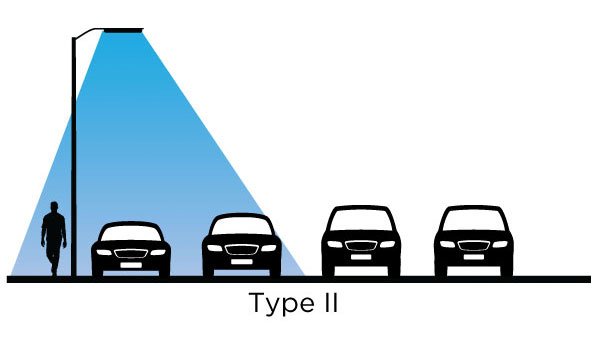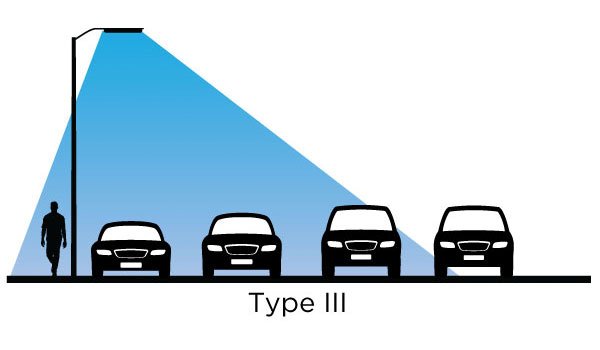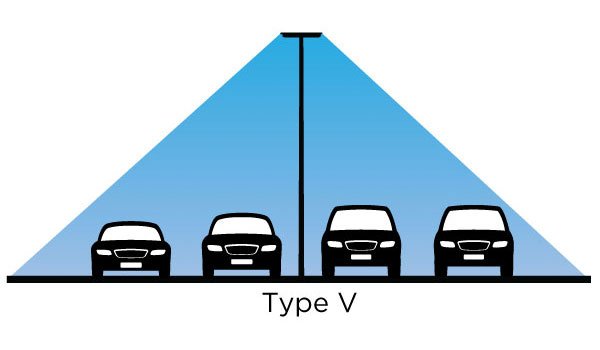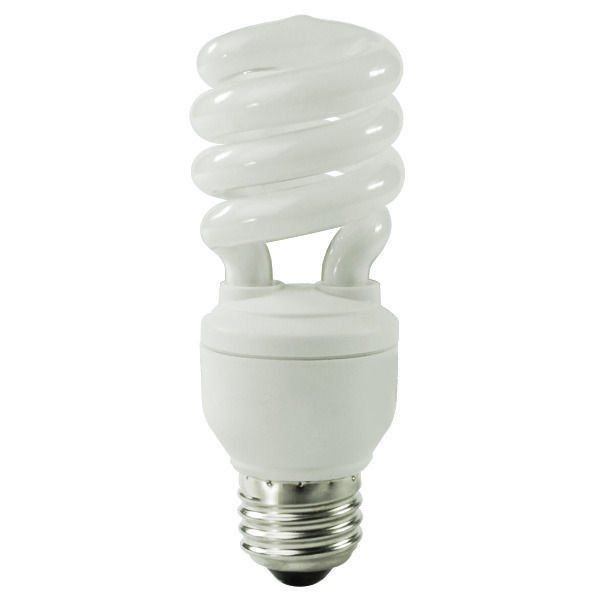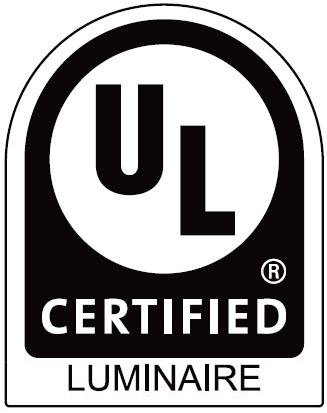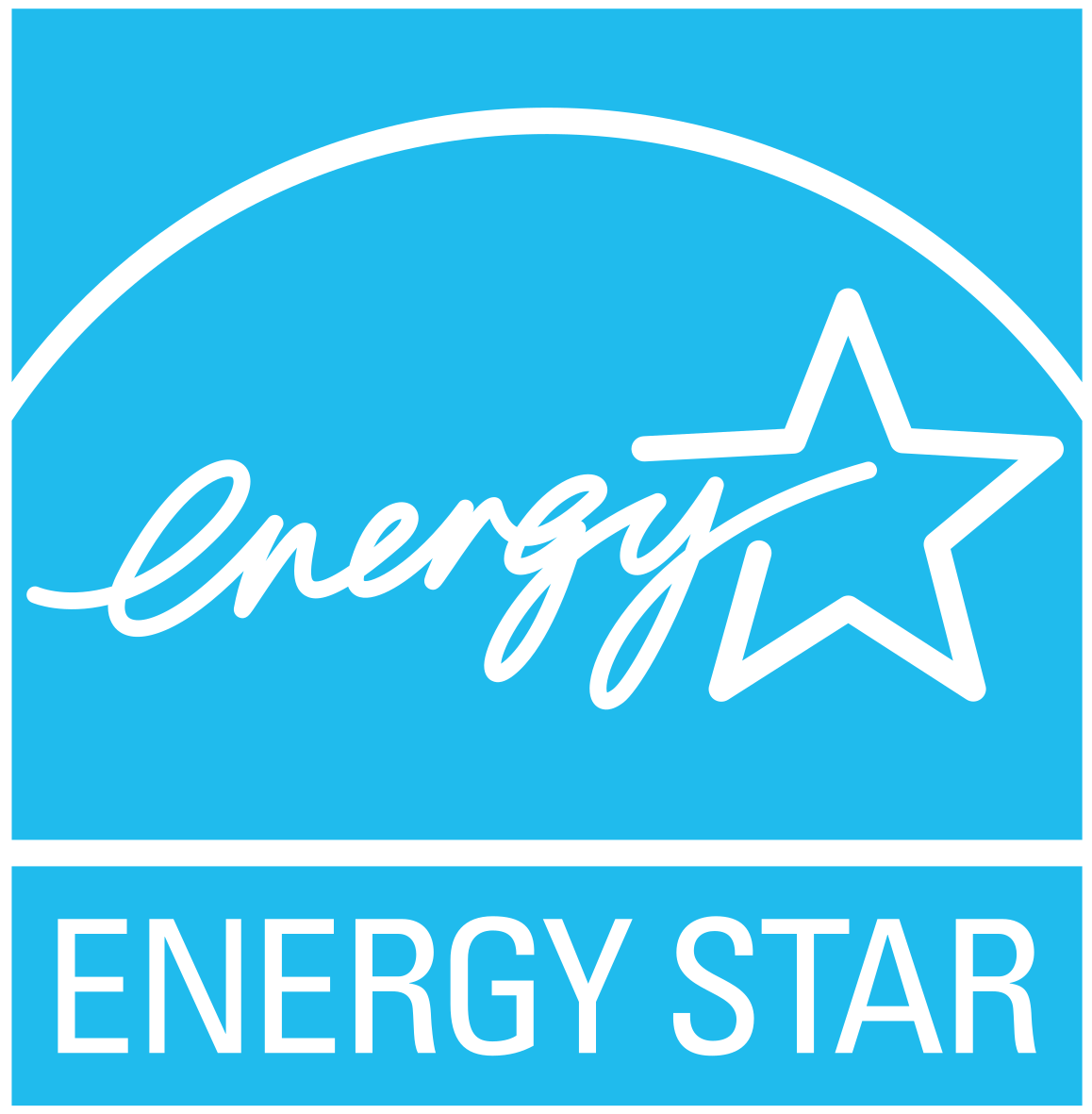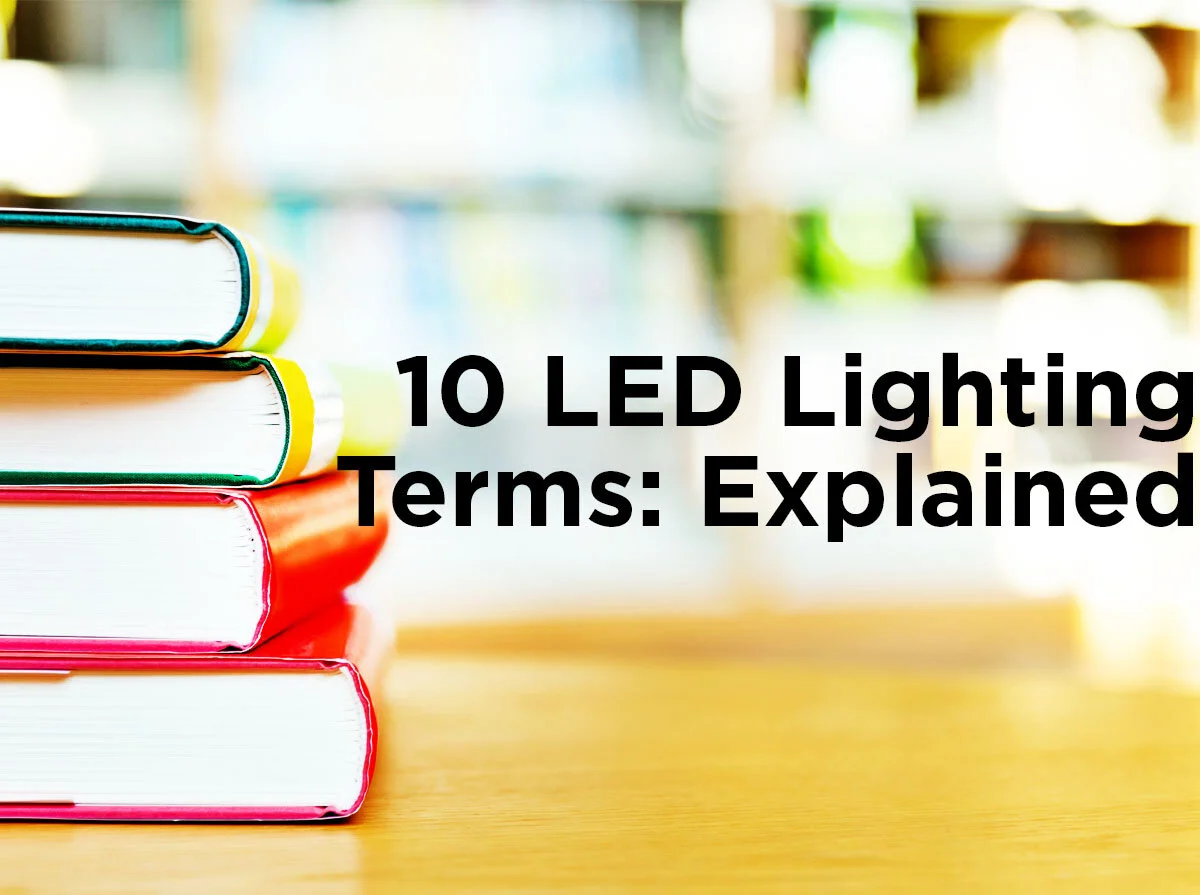Lighting Terms 101
Back in the days when incandescent lights reigned supreme, lighting was pretty simple. You only needed to look at the watts and bulb base to determine what replacement bulbs you need. Now that LEDs are the primary source of light, you need to be familiar with a slew of technical jargon in order to find the right bulb for your table lamp or fixture for your warehouse.
To help clear up some of the mystery and confusion, we've put together this list of some of the most common terms associated with lighting that you'll see across our website. Fair warning, this is going to be a long, detailed post with a lot of information. We've broken it down into sections to make it a little easier to find the information you need.
Jump to Section:
General Terms | Bulb Shapes & Base Types | Types of Fixtures | Ballasts | Types of LED Tubes | Lighting Controls | Ratings & Certifications | FAQs
General Terms
In this first section, we'll cover all of the basic terms you'll see when looking for bulbs and fixtures. Many of these terms are present on our product pages and spec sheets, and you can also find most of them on packaging.
Lighting Technologies
Incandescent - A type of lighting technology that produces light by heating a filament until it glows. Around 95% of the power used by an incandescent lamp is lost as heat.
Fluorescent - A low pressure mercury vapor discharge light source. The electric discharge generates ultra-violet (UV) energy, which is absorbed by a phosphor and converted to visible light.
Halogen - Halogens are similar to incandescents, however they use halogen gas and coiled filaments. The halogen gas help these lamps last longer than incandescents.
Xenon - These are simply halogen bulbs that use xenon instead of halogen.
Light Emitting Diode (LED) - A LED is a solid state semiconductor device that converts electrical energy directly into light. LEDs are extremely energy efficient and use a fraction of the energy of older technologies, helping to reduce electricity costs.
High-Intensity Discharge (HID) - Lamps in which an arc passing between two electrodes in a pressurized tube causes various metallic additives to vaporize and release large amounts of light. All HID lamps offer outstanding energy efficiency and service life.
Common Attributes and Specifications
Watt - A watt is a measurement of electrical power. In technical terms, it is equal to 1 joule (J, a unit of energy in the International System of Units(SI)) per second. In lighting, it's the amount of power the lamp or fixture uses to operate. The higher the wattage of the lamp, the more electricity that lamp will consume, and the higher your electricity bill.
Why are Incandescent Bulbs Measured in Watts? - When incandescents were invented, the general belief was that they produced an equivalent amount of light based on their wattage. However, now that LEDs can produce the same amount of light using a fraction of the energy, they needed to be measured differently. That's where lumens come in.
Lumens - The SI unit that measures of the total amount of visible light output.
Candela - The unit of measure indicating the luminous intensity (candlepower) of a light source in a specific direction. Light sources will have many different intensities depending on the direction being considered.
Lumens (mean) - the amount of lumens the bulb products at 50-percent of its life.
Wattage Equivalent or Watt Equals - This term is used to compare the approximate brightness of an LED or CFL lamp to an incandescent, halogen, or HID bulb that is being replaced. For an idea of how many lumens you need to replace an incandescent, take a look at the chart below:
Lumens needed to replace incandescent light bulbs according to the Department of Energy
Footcandle (fc) - A footcandle is a unit of illumination equal to 1 lumen per square foot (1 fc = 1 lumen/ft2). They are commonly referred to as lumens today, however you will see this term used frequently when planning lighting layouts for both residential and commercial lighting.
Efficacy or Lumens per Watt (LPW) - The rate at which a lamp is able to convert power (watts) into light (lumens). The higher the lumens per watt, the brighter the bulb, equaling a higher efficacy.
Luminous Flux - The amount of energy radiated in visible wavelengths (visible spectrum) per unit of time.
Center Beam Candlepower - Center beam candlepower, sometimes abbreviated as CB Candlepower, is the measure of the intensity of light produced at the center of a lamp beam, which is measured in candelas.
Lux (lx) - Lux is the metric system equivalent to footcandles. One lux equals 1 lumen per square meter (1 lx - 1 lumen/m2)
Footcandles can be converted to lux using this formula: 1 fc = 10 lx
Color Rendering Index (CRI) - The Color Rendering Index measures the effect a light source has on the perceived color of objects and surfaces. High CRI light makes virtually all colors look natural and vibrant. Low CRI causes some colors to appear washed out or even to take on a completely different hue.
Color Temperature - Measured in Kelvin, color temperature is the color of the light. Lighting with a lower color temperature (3000K and down) produce a warmer, more yellow light. Higher Kelvin numbers (4000K and up) produce a cooler, more blue light.
Incandescent lamps emit around a 2700K light.
Life Hours - This is the average rated life of a light based on laboratory tests. For most lamps, life hours are calculated by observing when 50% of a group of lamps fail.
LED L70 Life Hours - This is the number of operating hours used before the LED emits 70% of it's initial light output.
Volts (Voltage) - This is a measure of electrical potential. Voltage is what pushes electrical current through a conductor. Typically, residences are wired for 110-130 volts, with businesses being wired anywhere from 220-277 volts. Most of your household bulbs operate at 120 volts.
Beam Angle - This is the angle at which light is emitted from a light source. It determines the spread and coverage of the light. Beam angle designations vary slightly depending on the product.
Light Distribution - The pattern of light that is emitted by a fixture. On our site, you will mostly see this with area lights and high bays.
Type I - long, narrow light pattern that is best suited for sidewalks, walkways, and aisle ways
Type II - narrowest distribution you can find that still emits some light forward, ideal for the edges of smaller side streets, jogging paths, and wide walkways.
Type III - similar to but wider than a Type II, this one casts a pattern that is 2.75 times wider than the fixture’s mounting height. Type III is a popular choice for larger roadways and parking lit aisles.
Type IV - widest forward throw light pattern, meaning much of the light is pushed outward with very little light spilling behind the fixture. It is commonly used for security lighting and is an ideal fit for recreation outdoor sports lighting.
Type V - directs light in a circular or square pattern in all directions around the fixture. It is best suited for large open spaces like roadway medians and intersections, large parking lots, and anywhere an evenly spread pattern of light is required.
Color Selectable - Also referred to as CCT selectable, these lamps and fixtures have switches that allow you to choose different color temperatures during installation
Wattage Selectable - These lighting products have switches that let you choose from different wattages during installation.
Direct Light or Down Light - Direct light is the light that shines straight down out of a fixture.
Indirect Light or Up Light - Indirect light is light emitted up towards the ceiling, where it is reflected back down towards surfaces.
Smart Lighting - Smart lighting are lamps and fixtures that can be controlled with smartphones and other devices. These products offer an abundance of features, including scheduling and dimming.
Integrated LEDs (or LED-integrated) - Integrated LEDs are LED chips that have been integrated directly into the fixture. This means that these fixtures do not have replaceable bulbs.
Alternating Current (AC) - AC current is the primary current used in homes. With this current, the flow of electrons switches back and forth at regular intervals. It is easy to transmit over long distances, and can be easily adjusted using a transformer.
Direct Current (DC) - DC current flows in only one direction, and is widely used in low voltage applications.
The Four Types of Lighting
When learning about the basics of lighting, the four types of lighting should always be included. You may have heard them referred to as lighting layers or layers of lighting. Essentially, they are the four main ways in which lighting is used to illuminate a space.
Ambient Lighting - Ambient lighting is your basic, overhead lighting that lights up a space.
Accent Lighting - This lighting is used to create visual interest. This can be spotlighting artwork, drawing attention to architecture, or even highlighting your landscaping.
Wall Washing - technique used to evenly illuminate a wall.
Wall Grazing - technique used to create dynamic accents our of light and shadows on walls
Decorative Lighting - Similar to accent lighting, decorative lighting is used for aesthetic purposes. These lights are more about style than anything else, and can be used to draw attention to focal points in a room. Sconces and pendant lights are great examples of decorative lighting.
Task Lighting - Task lighting is used for doing specific tasks or activities that requires a brighter light. Examples include desk lamps, under cabinet lights, or reading lights.
Additional Terms
Spec Sheets - These are data sheets that contain all of the information about the light source. In most cases, the majority of this information is included on our product pages.
Compatibility Sheets - These sheets will list out what is compatible with the bulb or fixture you are looking at. Common compatibility sheet include dimmers, transformers, and ballasts.
Installation Sheets - These are the step-by-step guides for installing fixtures and certain types of lamps. If you are not sure how to install your fixtures or LED lamps after reading the instructions, we strongly recommend call a licensed electrician.
IES Files - Created by the Illuminating Engineering Society, IES files contain photometric data that can be used by architectural programs. They help show how a light source will light a space.
Lighting Layout Tool - A relatively new feature to our site, the light layout took works with IES files to help you determine how many fixtures are needed for your space.
Bulb Shapes and Base Types
For this next section, we'll take a look at bulb shapes and base types. The number of shapes and bases are so numerous, we would need multiple blog posts to cover all of them. For the sake of simplicity, we'll go over the most common ones.
Common Bulb Shapes
A-Shape - These are the tradition light bulb shape, with A19s being the standard household bulb. Other common shapes are A15s, A21s, and A23s.
Chandelier - Decorative bulbs that mimic the appearance of a candle flame. Most chandelier bulbs have either a straight tip or a flame tip.
Globe - Round bulbs used for decorative lighting that come a various sizes.
MR - A "multifaceted reflector" bulb that focuses light into a single focal point.
BR and R - These are directional bulbs that their light outwards. They are commonly used in recessed and track lighting.
PAR - These reflector bulbs product a broad direction light, making them ideal for use in track, theatrical, and outdoor flood lighting
AR - Primarily used retail and architectural lighting, these lamps deliver a tight beam spread perfect for applications the require high levels of accent lighting.
Vintage Reproductions - Reproductions of turn-of-the-century lighting that are available in various shapes including Edison, ratio tube, and Victorian.
Spiral Compact Fluorescents (CFLs) - An energy efficient alternative to incandescent lighting, spiral CFLs are mini versions of fluorescent tubes that can be formed into a variety of shapes.
PL & PL-L - Available in fluorescent and LED versions, these bulbs typically come in a twin-tube, quad-tube, or spiral shape, and have either a 2-pin or 4-pin base.
Tubes - Available in fluorescent and LED options, tubes come in a variety of types: linear, u-bend, and circline. Linear tubes are the most common.
T5 - These tubes have a diameter of 0.625".
T8 - These linear tubes have a diameter of 1".
T12 - These linear tubes have a diameter of 1.5".
Common Base Types
Medium E26 - This is the standard household screw base that measures 26mm in diameter.
Intermediate E17 - This screw base is slightly larger than candelabra and has a 17mm diameter. This is the same base type as C9 bulbs.
Candelabra E12 - 12mm screw base used for most chandelier bulbs, night lights, and C7s.
Mogul E39 - Primary found in commercial applications, this screw base measures 39mm in diameter. It can only be used in E39 sockets.
Mogul EX39 - The same size as E30 bases. The only difference is that this screw base has an extended center terminal. It can be used in both E39 and EX39 sockets.
GU5.3 - Pin base used on MR lamps.
GU10 - A twist and lock base used on MR lamps.
GU24 - A twist and lock base used on a variety of lamp types.
Mini Bi-Pin - These bases are used on mini indicator lights.
2-Pin - These bases are commonly associated with PL and PL-L lamps. The most common types include G23, GX23, G23-2, GX23-2, and G24d-1.
A 2-pin CFL lamp is also only compatible with a magnetic ballast.
4-Pin - These bases are commonly associated With PL and PL-L lamps. G24q-3, Gx24q-3, and 2G11 are a few of the most common.
CFL 4-pin lamps can only be used with electronic ballasts.
Linear tube bases - Most linear tubes are pin base
Miniature Bi-Pin - Pin base used on linear T5s.
Medium Bi-Pin (G13) - This base is a pin base used on linear T8 and T12 tubes.
Recessed Double Contact (R17d) - This base had two encased pins and are typically used for high ouput T8s and T12.
Single Pin (FA8) - This base has a sing large pin. It is used mainly for longer T8 and T12 lamps.
Common Types of Fixtures
Now that we've covered bulb shapes and bases, let's take a look at some of the most common types of fixtures.
High Bays - Available in linear and round options, high bays are designed for high ceiling applications. They are primarily used in warehouses, factories, and similar applications.
Area Lights - Also called shoeboxes, these are your standard parking lot lights. They produce directional light that can cover a large area.
Troffers - A recessed, rectanglar fixture that mounts into a dropped ceiling grid. These fixtures are easily identifiable due to their center basket.
Panels - Flat, low profile fixtures that are recessed mounted into drop ceiling grids. Some can be surface mounted with compatible kits.
Edge-Lit - have LED strips places along the edges of the fixture.
Back-Lit - have LED strips in rows across the back of the fixture.
Strip Light Fixtures - Available in multiple configurations and lengths, these linear fixtures are commonly used in warehouses, storage facilities, and more. They are available in LED, LED ready, and fluorescent options.
Linear Suspension Fixtures - A more modern, architectural version of strip light fixtures that can be used in a wide range of applications including offices, hotels, and restaurants.
Downlights - Also called recessed can lights, these lights are commonly recessed into the ceilings. They are available in a wide range of types.
Vapor Tights - These fixtures have a gasketed seal that keeps out dirt and water. They are easily identifiable by their latches.
Vapor Proof - Similar to vapor tight fixtures, vapor proof fixtures are also protected agains vapors, gases, and corrosive fumes.
Track Lights - These are adjustable light fixtures suspended from a mounting rail or track in the ceiling. They come in three different types: Halo (H-type), Juno (J-type), and Lightolier (L-type). Each type and their accessories are not interchangable.
Ballasts
Fluorescent, HID, and some LED tube lights are controlled by ballasts. A ballast is used to provide the right amount of voltage to start the lamp. Once the lamps are turned on, the ballast regulates the amount of current.
Types of Ballasts
Magnetic Ballast - A magnetic ballast uses a core and coil assembly transformer to perform the minimum functions required to start and operate a tube. This is an old, inefficient technology that has been being phased out since 2010.
Electronic Ballast - This type of ballast operates lamps at frequencies above 20,000 Hz. Maximum efficiency is obtained through the use of electronic circuitry and optimum lamp operating characteristics.
Instant Start - These ballasts apply high voltage across the lamp without preheating the cathode, making it the most most energy efficient starting method for fluorescent lamps.
Programmed Start - Also called Programmed (Rapid) Start, these ballasts preheat the cathode before ignition, maximizing the number of lamp starting cycles while maintaining energy efficiency. This ballast is ideal for applications with occupancy sensors and several on/off cycles per day.
Probe Start - Designed for use with probe start metal halide bulbs. These bulbs use three electrodes to ignite the gas and keep the lamp lit.
Pulse Start - Designed for pulse start metal halide bulbs. These bulbs use two operating electrodes and a high voltage igniter to light the lamp. This start method helps increase lamp life and efficacy.
LED Drivers
Similar to ballasts, LED drivers provide LED light bulbs with the electricity they require to function and perform at their best. Since LEDs run on low voltage direct current, the driver converts AC current into DC and keeps the voltage regulated. There are two types of LED drivers:
Constant Current - These LED drivers are designed for lights that require a fixed output current and a range of output voltages.
Constant Voltage - These driver for LED fixtures needing a fixed output voltage with a maximum output current.
Other Terms Related to Ballasts
Ballast Factor (BF) - This is the ability of a ballast to produce light from the lamp or lamps that it powers
Low Ballast Factor (less than 0.77) - Ballasts with this ballast factor are used to save energy and reduce light output. They are ideal for bathrooms and hallways.
Normal Ballast Factor (0.77 to 1.1) - This ballast factor will operate your lamps at or near their rated light output. Use these ballasts for most applications.
High Ballast Factor (above 1.1) - The ballast factor is used to overdrive lamps to increase light output by up to 10%. This is ideal for warehouses and other areas with high ceilings.
ANSI Code - These are codes created by the American Nation Standard Institute to help you which bulbs and ballasts can be used together.
Types of LED Tube Lights
On the subject of ballasts and tubes, we need to take a quick look at LED tube lights. While LED tubes are a same sizes and lengths as their fluorescent counterparts, you can't just pop an LED tube into your fixture. Depending on the operation of the tube, some are ballast compatible while others require significant modifications to the fixture.
Type A or Plug and Play - These LED tubes are designed to work with existing ballasts and don't require any rewiring of the fixture. They are the easiest LED tubes to install. Simply take out the old tubes and put these in. Please note that these tubes can only be used with ballasts that are listed as compatible. On 1000Bulbs.com, you will find a Ballast Compatibility PDF hyperlinked in the Details section under Brochures & Spec Sheets.
Type B or Ballast Bypass - Also referred to as "direct wire" lamps, these LED tubes work without a ballast. This means that the ballast must be removed (or bypassed) from the fixture during the installation process. Once the ballast is removed, the fixture is rewired depending on the tubes operation so that the tubes operate directly off of the fixtures line voltage. We strongly recommend having a licensed electrician perform this installation.
Single-Ended Wiring - tubes with single-ended operation receive power on one end of the lamp
Double-Ended Wiring - tubes with double-ended operation receive power on both ends of the lamp
Type A/B or Hybrid - These LED tubes can first be used as a Type A lamp as long as the ballast is listed as compatible. When the ballast reaches the end of it's life, the tube can be reinstalled as a Type B lamp after the ballast has been removed and the fixture rewired. Again, we recommend contacting a licensed electrician to remove the ballast.
Type C or LED Driver Compatible Tubes - These LED tube lights operate with an external LED driver that must be purchased at the same time as the lamps to ensure compatibility. The existing ballast is removed during installation. The remote driver allows for 0-10V dimming.
Lighting Fact - Bypassing the ballast from a fixture is very beneficial. It eliminates costs and maintenance associated with ballasts, and also removes a potential failure point from the fixture.
Lighting Controls
Lighting controls are used to control light source. They can range from a simple light switch to a complicated electrical relay.
Light Switches - Light switches are used to control lights and come in a variety of styles and types.
Single Pole Switch - Controls an outlet or lighting fixture from a single location.
Three-way Switch - Controls a light fixture from two different locations.
Four-way Switch - Controls a light fixture from three different locations.
Multi-location - Controls a light fixture from multiple locations.
Dimmers - Dimmers are a light switch that lowers or raises the brightness level of the lights being controlled.
Incandescent/Halogen - These dimmers can be used with any incandescent and halogen bulbs.
CFL and LED Dimmers - These dimmers are designed for use with CFL and LED dimmers. These dimmers must be listed as compatible with your bulbs.
TRIAC - Forward-phase dimmer that can be use with incandescents, halogens, and some LED lamps.
Magnetic Low-Voltage (MLV) - Forward-phase dimer designed for systems using magnetic transformers.
Electronic Low-Voltage (ELV) - Reverse-phase dimmers designed for use with systems using electronic transformers.
0-10V Dimmers - These dimmers are only used in commercial applications and are designed to work with fixtures that have 0-10V dimming.
Photocells - Photocells are sensors used to detect and measure light and other radiations. Essentially, they turn your outdoor fixtures on at dusk and off again at sunrise. Fixtures can have photocells built-in (integrated), or have ports where they can be added later.
Locking-Type - These photocells are designed to withstand vibrations and help prevent disconnects due to impacts.
Stem - These photocells are the easiest to install, usually mounting to a port on the fixture. They can also be remote mounted as well.
Stem and Swivel - These are the same as stem photocells, except that they can pivot and rotate as needed to ensure it is facing the sun.
Fixed Position - These photocells are attached to a wall or the side of your equipment.
Occupancy and Vacancy Sensors - These controls will turn lights on when a room or area is occupied, then turn them off again once the space is no longer occupied.
Active - Active sensors sent out sound waves to detected changes in the space. The most common active sensor are ultrasonic sensors.
Passive - These sensors use heat to detect occupancy. The only type of passive sensor is the passive infrared (PIR).
Occupancy vs Vacancy - Occupancy sensors turn the lights on and off automatically. Vacancy sensors only turn the lights off. They have to be turned on manually.
Motion Sensors - These controls detect motion. When motion is detected, the lights will turn on. Once motion is no longer detected, the lights will turn off.
Passive Infrared - These sensors look for body heat and are the most commonly used sensors in home security systems.
Microwave (MW) - These sensors use waves that detect movement.
Dual Technology Motion Sensors - These sensors use a combination of both Passive Infrared and Microwave technology.
Ratings and Certifications
Ratings and certifications play a very important role in lighting, as they can tell you how and/or where a lamp or fixture can be used safely. The following terms are the most common ones you'll see in Product Descriptions, the Attributes section, and on spec and installation sheets.
Underwriters Laboratories (UL) - UL is an independent science company which tests new products for safety and efficiency to provide a measurable system of standards and ratings for electrical devices.
Electrical Testing Laboratories (ETL) - ETL also tests parts and components to ensure that they meet standard established by UL. Based in the UK, they testing and certification division of Intertek Testing Laboratories.
DesignLights Consortium® (DLC) - DLC is a non-profit organization that has create a set of standards used to promote energy efficiency for the commercial lighting sector. Manufactures can voluntarily submit their products for certification. DLC currently has programs covering LED fixtures and retrofits, lighting controls, horticultural fixtures, and outdoor lighting.
DLC 5.1 Standard - Depending on the fixture or retrofit kit type, these meet minimum light output and efficacy requirements
DLC 5.1 Premium - Products that meet these requirements exceeded 5.1 Standard efficacy requirements, achieving higher energy savings.
Energy Star - Energy Star is a certification given to lamps and fixtures that meet specific criteria for energy savings and performance.
Title 20 - A lighting regulation for the state of California that requires most LED lamps to produce at least 68 Lumens per Watt and having a minimum rated life of 10,000 hours. LED MR16s, however, must produce at least 80 Lumens per Watt and have a life span of at least 25,000 hours.
Lighting Fact - Per state regulations, all lighting must at least meet Title 20 in order to be sold in California.
Title 24 - This set of California regulations centers on building codes. These codes are designed to ensure the existing and new buildings can meet a certain level of efficiency.
JA8 - This is the section of the Title 24 regulations that pertains to lighting, aiming to promote energy-efficient lighting and improve the quality of light in residential and nonresidential buildings. Lighting must meet a variety of requirements, including emitting a minimum of 45 Lumens per Watt and achieving full brightness in under 0.5 seconds.
JA8 is required in new construction, renovations, and additions. In order to pass inspection on California, your lighting must be JA8 complaint.
Damp Location - Fixtures and lamps can be used in areas where they may come into contact with some moisture. Common ares that need a damp location lighting include bathrooms, cover porches, patios, and over kitchen sinks.
Wet Location - Fixture and lamps can be used in areas where they will come into direct contact with water, rain, snow, and other weather. Typical applications that need wet location rated products include enclosed showers, outdoor fixtures that are not full enclosed, and garages.
Enclosed Rated - LED lamps with this rating can be used in any fixture where the bulb is 'enclosed' or encased in a way that the bulb cannot get proper airflow. Examples of common enclosed fixtures include mason jar lights, ceiling lights, ceiling fans, range hoods, porch lights, landscape lights, and vanity lights.
Class 1 Div 2 - This rating pertains to explosion proof lighting. Products with this rating are suitable for use in areas where flammable gasses and liquids may be present, but would only be in ignitable concentrations under abnormal circumstances. Gas stations, oil refineries, and laboratories are a few examples of locations that need this rating.
Ingress Protection (IP) Ratings - These ratings are used to identify what materials the lamp or fixture is protected from. It is composed of two numbers. The first number identifies solid objects, while the second number identifies liquids. The most common IP rating you run across on our site is IP65. This breaks down to:
6 - Dust tight. Dust and other particles cannot enter the fixture.
5 - Protected against water jets from any angle.
IK Ratings - These ratings identify the level of protection a product has against mechanical impacts. The scale ranges from IK00 to IK10 and shows how many joules (J) of impact the housing can withstand:
IK00 - Not protected
IK01 - Protected against 0.14 joules impact (equal to impact of 0.55 lbs dropped from 22").
IK02 - Protected against 0.2 joules impact (equal to impact of 0.55 lbs dropped from 32".
IK03 - Protected against 0.35 joules impact (equal to impact of 0.55 lbs dropped from 4.6').
IK04 - Protected against 0.5 joules impact (equal to impact of 0.55 lbs dropped from 6.6').
IK05 - Protected against 0.7 joules impact (equal to impact of 0.55 lbs dropped from 9').
IK06 - Protected against 1 joules impact (equal to impact of 0.55 lbs dropped from 13').
IK07 - Protected against 2 joules impact (equal to impact of 1.10 lbs dropped from 13').
IK08 - Protected against 5 joules impact (equal to impact of 3.7 lbs dropped from 9.8').
IK09 - Protected against 10 joules impact (equal to impact of 11 lbs dropped from 6.6').
IK10 - Protected against 20 joules impact (equal to impact of 11 lbs dropped from 13').
Burn Position - This is the position in which the lamp is designed to operate at peak performance and safety. Lamps used in the incorrect position can operate less efficiently. Burn position indications are commonly found on HID and LED HID retrofits lamps. The most common positions are:
Horizontal - The lamp can only be used horizontally.
Vertical - The lamp can only be used vertically.
Universal - The lamp can be used both horizontally or vertically.
Frequently Asked Questions
For this final section, we'll take a look at some of the most common FAQs we get. These will cover everything, including bulbs, fixtures, and Christmas.
Are LED lights good for the environment? - Yes. LED are efficient, long-lasting, and emit little to no greenhouse gases. Due to this, they are considered sustainable lighting.
Do LEDs burn out? - Like all lighting, LED will eventually burn out. It just takes a long time. LEDs slowly dim as they age. In most cases, the light output will drop noticeably when it;'s time to replace them.
Do LEDs produce heat? - Yes, LEDs do generate heat. However, they do not get anywhere near has hot as other types of lighting.
Can I use LED bulbs outdoors? - You can, however you will need to pay close attention to the ratings. Wet location rated bulbs are safe to expose to the weather, so they do not need to be under cover or used in a fixture. If you bulb is damp location rated, it needs to be protected from direct exposure to rain and other weather. If the bulb is being used in an enclosed fixture, like a porch light, then it must be enclosed rated.
Are LED lights dimmable? - Only some LED are dimmable. If the LED bulb is dimmable, it will be labeled as dimmable and have a list of compatible dimmers.
Is this LED bulb dimmable? The spec sheet says yes but the product listing says it is not. - When we don’t have dimmer compatibility information from the manufacturer, we don’t list the product as dimmable. Not all dimmable LED bulbs work with all LED dimmers. Because we’re not able to help you make sure this bulb will work with your dimmer switch, we prefer to mark it as not dimmable.
The spec sheet says this bulb is not dimmable but the customer reviews say that they are. - When we don’t have dimmer compatibility information from the manufacturer, we don’t list the product as dimmable. Not all dimmable LED bulbs work with all LED dimmers. Because we’re not able to help you make sure this bulb will work with your dimmer switch, we prefer to mark it as not dimmable. Using it with an incompatible LED dimmer can lead to flickering, buzzing, lowered dimming performance, and other compatibility issues. It’s also possible that a bulb is not designed to be dimmed, but can work temporarily on a circuit with a dimmer, but doing so may shorten the life of the bulb. Either scenario could be in play here. We don’t have anything from the manufacturer saying that this bulb is dimmable on any switches, so we don’t advise using it with a dimmer switch even though another customer was able to.
My dimmer is not listed on the compatibility PDF. Can it sill be used? - Unfortunately because your dimmer is not listed, it is either incompatible or has not been tested. Using this bulb with your dimmer may cause performance issues including humming, buzzing, flickering, and poor dimming performance.
Are incandescent bulbs dimmable? - Yes, all incandescent bulbs are dimmable. They can be paired with any incandescent dimmer.
Are halogen bulbs dimmable? - Yes, all halogen bulbs are dimmable and can be paired with any halogen dimmer. Xenon and krypton bubs are dimmable as well.
Can a 130 Volt bulb be used in a 120 Volt fixture? - Yes, however the light output will roughly decrease by about 20%.
Are 12 Volt LED MR16s AC or DC? - All 12V LED MR16s can work both AC and DC.
Do LED ready fixtures come with a ballast? - No, LED ready fixtures do not come with a ballast since they are designed to be used with direct wire LED T8 tubes.
Can halogen PAR lamps be used outside? - Yes, the thick glass on PAR lamps can take the shock of rain so that they can be used indoors or outdoors without being in an enclosed fixture.
Can rope light be cut anywhere or are there certain spots? - No, rope light cannot be cut anywhere. If the rope light spool is cuttable, there will be notated cutting marks along the rope.
Are rope light kits cuttable? - No, rope light kits are not cuttable as they are not desigend to be cut. If cut, the rope light kit will not work and cannot be reconnected again.
Can any of your PL lamps be used as replacements for Ottlites? - Ottlite lamps use specialty bulbs manufactured specifically for those lamps. We have no way of knowing if the bulbs we carry will fit or produce the same color temperature. You will need to contact Ottlite directly for a replacement.
Are the bulbs on LED Christmas strings replaceable? - No. All of our LED string lights are single piece molded construction, meaning the bulbs cannot be replaced. This protects from water invading the sockets. LED string lights are very reliable and should stay lit.
If an LED bulb burns out, will the rest of the string stay lit? - LED string lights are very reliable and should stay lit.
Are the bulbs on incandescent Christmas strings replaceable? - Yes. Our Christmas light strings will stay lit if one lamp fails (as long as the failed lamp is still in the socket). Failed lamps should be replaced with the ones provided with each string (as soon as feasibly possible).
If an incandescent bulb burns out, will the rest of the string stay lit? - As long as the failed lamp is still in the socket, our incandescent Christmas light strings will stay lit if a lamp fails. Failed lamps should be replaced with the ones provided with each string as soon as possible.
Do you sell replacement bulbs for incandescent mini lights? - No. We do not sell replacement mini lamp bulbs because there are too many different makers out there and sockets vary slightly enough that they might not fit. We recommend purchasing an additional string to use as replacements.
Are the LED mini light strings wired in series or in parallel? - These light strings are wired in parallel.
Are LED string lights dimmable? - No, LED string lights cannot be dimmed.
Are LED C7 and C9 bulbs dimmable? - No, LED C7 and C9 bulbs are not dimmable.
Are incandescent string lights dimmable? - Yes, incandescent string lights are dimmable.
Are incandescent C7 and C9 bulbs dimmable? - Yes, incandescent C7 and C9 bulbs are dimmable.
What are the lumens and Kelvin for Christmas strings and bulbs? - Since Christmas products are for decorative purposes only, the manufacturers do not measure the lumens and Kelvin.
Do Christmas strings have life hours? - No. Manufacturers typically do not measure life hours on these types of Christmas items.
What is the difference between warm white and warm white deluxe? - Warm white deluxe strings are more warm or yellow, closer to incandescent lights. When looking for something similar to incandescent string lights, most people prefer the warm white deluxe. The warm white lights are still warm on the scale, but a little brighter white than the deluxe strings.
What is the difference between SPT-1 and SPT2 wire? - SPT-1 wire has thicker wire than SPT-2 wire.
You've made it to the end! Though long, we hope that this post has been a helpful resource. Just keep in mind that it's barely scratched the surface of all of the terms you'll discover in lighting.
For a more in-depth list, check out our terms glossary. Is there something we missed? Let us know in the comments below. Feel free to bookmark this post so you can keep it handy as a reference guide. And if you need any additional help, don't hesitate to reach out to one of our lighting experts at 1-800-624-4488.







